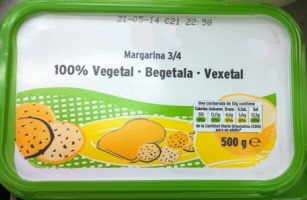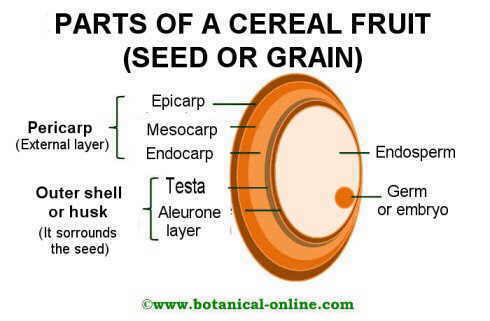Contents
- 1 Characteristics and uses of trans fatty acids
- 1.1 What are trans fats?
- 1.2 Hazards of trans fats
- 1.3 Which products contain trans fats?
- 1.4 PROPERTIES AND CHARACTERISTICS OF TRANS FATS
- 1.5 Obtaining trans fats or hydrogenated fats
- 1.6 Why are trans fats used?
- 1.7 EFFECTS OF TRANS FATS FOR HEALTH
- 1.8 Other negative consequences of using trans fat
- 1.9 Latest trends in the use of trans fats
Characteristics and uses of trans fatty acids
What are trans fats?
Trans fat or hydrogenated fats are a type of unsaturated vegetable fats obtained from technological processes of baking and hydrogenation.
In order to make liquid vegetable oils solid as butter, a hydrogenation process is performed, (hydrogen is added at an elevated temperature).
During this process, the unsaturated fats change their geometric isomerization from cis to trans.
This is the case for the production of some margarines.
Hazards of trans fats
Scientific studies have shown that this type of fat, although it comes from plant origin, has very harmful effects on health, especially for the cardiovascular system.
Its effects on the rise in cholesterol and the formation of atheroma plaques are even more negative than those of the saturated fats provided by butter.
For this reason, there are currently margarines totally free of trans fats, or margarines with less than 1% of trans fats. (Formerly, margarines could contain up to 60% hydrogenated fats.)
Which products contain trans fats?

Photograph of margarine. All margarines are likely to contain trans or hydrogenated fats, we will have to read the ingredients to know if they have them or not
In principle, this type of fat is found naturally in milk and fat of ruminant animals, although in a very low proportion (between 2 and 5%).
Industrial products are the main source of trans fats. The proportion in this type of food can reach up to 45%.
The main sources of trans fats are:
- Products with vegetable fats that have been artificially subjected to hydrogenation: This is very common in confectionery products, breads with fats, cookies, cakes, muffins, pastries, etc.
- Products that are cooked with trans or semitrans fats: These products include, for example, prepared sauces, mayonnaise, snacks, fast foods, fried dishes with transoils mixed with palm oil or coconut oil.
These types of fats are widely used in restaurants in fast fried foods as they are much more durable and heat resistant than other fats. Large food chains also often make use of this type of fats.
PROPERTIES AND CHARACTERISTICS OF TRANS FATS
Obtaining trans fats or hydrogenated fats
Vegetable fats (olive oil, sunflower oil, corn oil, etc.) are liquid at room temperature, which requires a specific process that transforms them into solids to match their physical characteristics to animal fats such as butter.
This process, called hydrogenation, consists of modifying the usual bonds of the oils, which converts their unsaturated properties into saturated ones. They are commonly known as trans fats.
At first, these types of fats were presented as an alternative to the use of oils of animal origin. Since they do not contain cholesterol (cholesterol is exclusive to foods of animal origin), they were offered and continue to be offered as healthier products than those of animal origin.
Subsequent studies have shown that trans fats are even more harmful than animal fats. Although they do not contain cholesterol, they are able to raise the production of “bad cholesterol” (LDL) in the blood and decrease “good cholesterol” (LDL).
![]()
Why are trans fats used?
The food industry uses these fats because they are cheaper than other fats of animal origin. In addition, products made with this type of fat need less cooling, are more stable and can maintain their consistency at room temperature, which would not be possible if other types of fat like butter will be used.
Also keep in mind that saturated vegetable fats, such as palm oil, are more expensive.
In the case of margarines, the hydrogenation to which the vegetable oils are subjected makes it possible to obtain an unsaturated fat with the properties of the saturated fats. This creates a product that has the consistency, texture and appearance of the butter.
EFFECTS OF TRANS FATS FOR HEALTH
Although the origin of trans fat is different from animal fats, it is considered that, nutritionally, they do not differ so much one from the other, and to its action and effect in our body of trans fats is the same as that of saturated fats such as lard.
Both fats will share the same drawbacks as consuming this type of fat, such as an increase in cholesterol, atherosclerosis risk, and other cardiovascular problems.
Other negative consequences of using trans fat
Recent studies have suggested another set of negative factors in the use of trans fats. Among the most significant we have the following:
- Alzheimer’s: Some studies suggest that this type of fats could increase the incidence of this disease, although there is no clear evidence.
- Cancer: Several studies are under way to determine if trans fats can favor the development of cancerous tumors, primarily colon cancer.
- Depression: A comparative study carried out in Spain concluded that people who regularly eat that type of fats are up to 48% more likely to suffer depression.
- Obesity: The use of these fats could induce obesity in a higher percentage than animal fats, although both provide the same calories.
- Diabetes: Although not tested enough, there are suspicions that this type of fat could favor the onset of type II diabetes.
- Infertility: A 2007 study showed that every time there was a 2% increase in trans fat consumption with respect to carbohydrate intake, the odds of female infertility increased by 70% due to lack of ovulation.
Latest trends in the use of trans fats
Numerous criticisms of the use of this type of fat has led many companies to replace trans fats with other oils.
Many have replaced these fats with saturated vegetable oils like palm oil, which remains semi-solid at room temperature.
This type of oil is also not recommended as, in practice, because of its saturated nature, it presents the same drawbacks as animal fats such as butter.
Many countries have begun to regularize the use of these oils. Some have already set the maximum amount allowed by weight. In many countries it is mandatory to specify on the label the content of trans acids in the products that contain it.
Health authorities in many places are trying to reduce the trans fat and saturated fat content of foods. In that direction, many margarines currently contain emulsifiers so that they do not have to use trans fats.
* Related information:
![]() More information on fats.
More information on fats.








